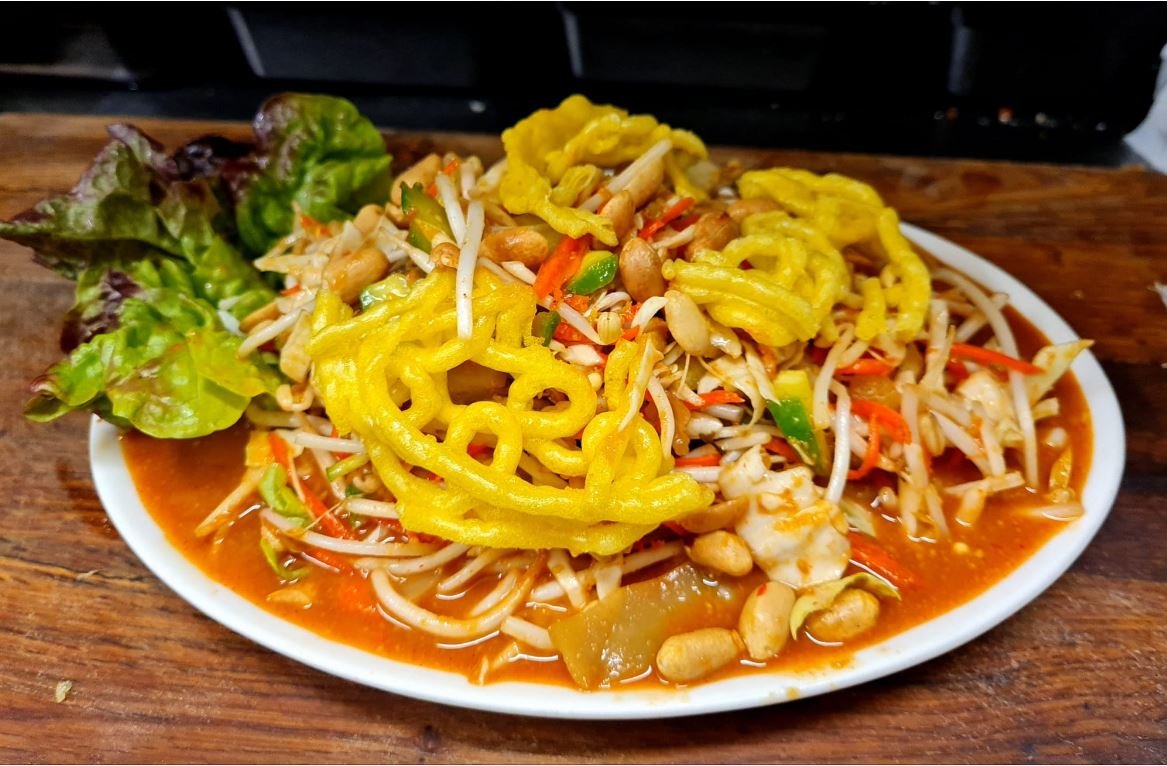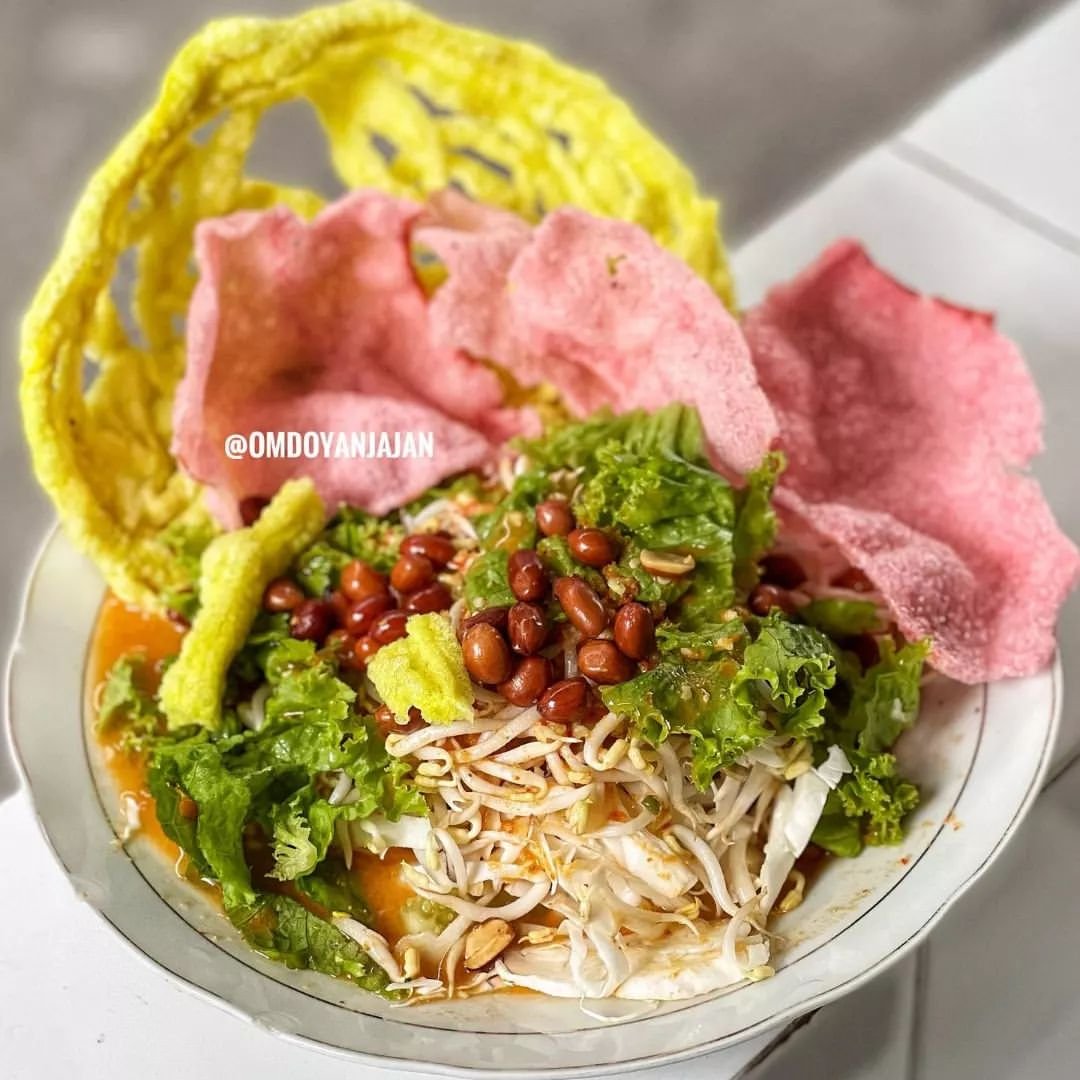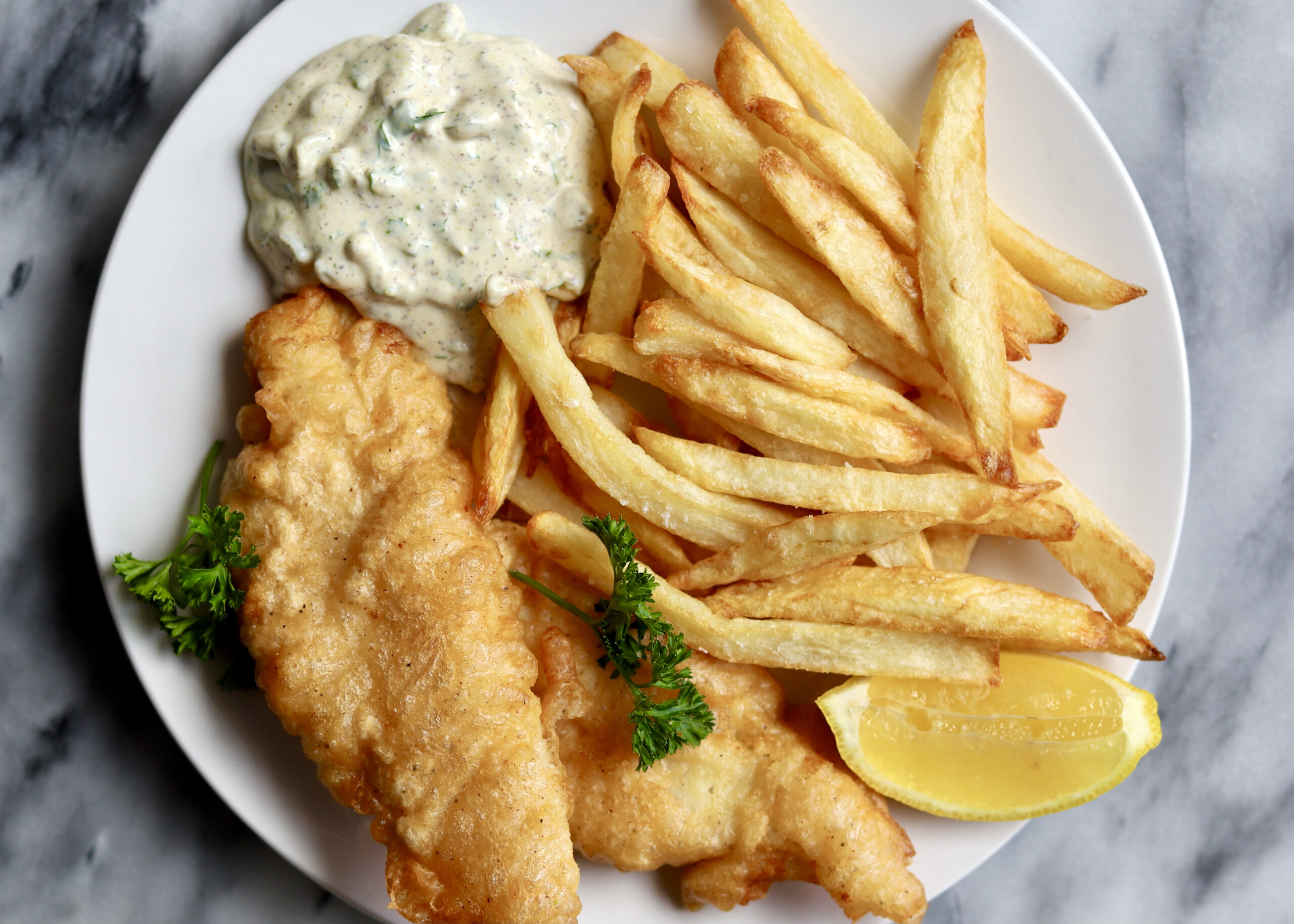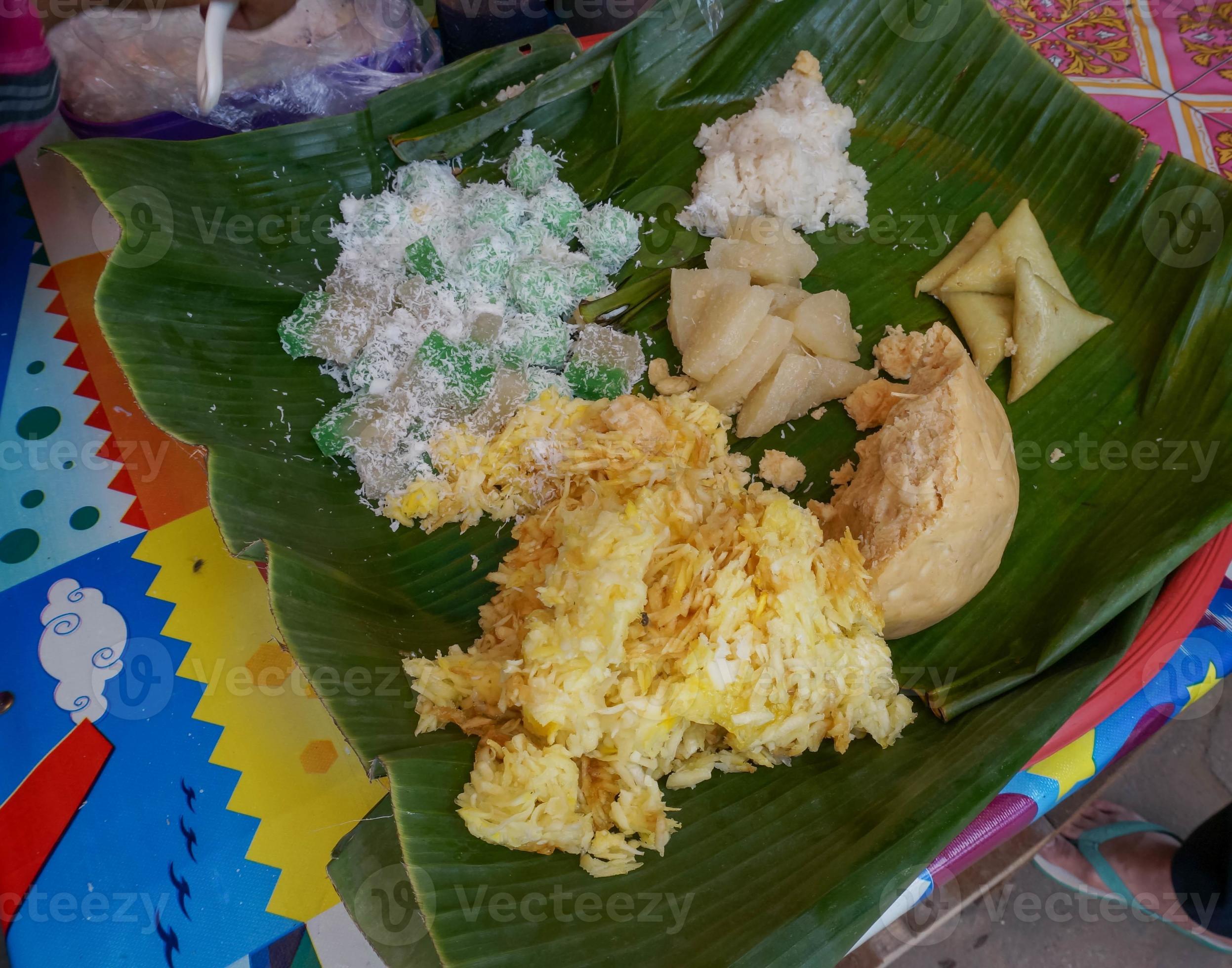
Asinan Betawi: The Tangy, Crunchy Soul of Jakarta’s Culinary Heritage
Amidst the relentless hum of Jakarta’s traffic and the towering glass facades of its modern skyline, a culinary treasure endures, offering a vibrant taste of the city’s soul. It’s not found in a fine-dining establishment, but often served from a humble wooden cart (gerobak) or a modest, time-worn shop. This dish is Asinan Betawi, a pickled vegetable salad that is a symphony of textures and a riot of flavors—sweet, sour, spicy, and savory, all in one exhilarating mouthful. More than just a snack, Asinan Betawi is a living artifact, a crunchy, tangy testament to the rich cultural tapestry of Jakarta and its indigenous Betawi people.
To understand Asinan Betawi is to first deconstruct its name. The word asinan is derived from the Indonesian root word asin, meaning “salty.” This points to the dish’s origins in the age-old practice of preserving food through pickling or brining. However, to call it merely a “salty dish” would be a profound understatement. It is a complex and masterfully balanced creation that dances on the palate, a refreshing antidote to the city’s sweltering tropical heat.

The Anatomy of a Perfect Plate
At its core, Asinan Betawi is a salad, but one unlike any Western counterpart. It is a celebration of humble, everyday vegetables, transformed by a light pickling process and unified by a spectacular sauce. The foundation is a medley of crisp, fresh, and preserved vegetables, each contributing a unique texture and flavor.
The typical vegetable cast includes thinly sliced cabbage, crunchy bean sprouts (tauge), cucumbers, and lettuce. But the key ingredient that sets it apart is sawi asin, or salted and preserved mustard greens. These greens provide a distinct, sharp, and savory funk that cuts through the richness of the other components. Alongside the vegetables, you will almost always find cubes of firm, white tofu, which have been boiled to a soft, yielding texture. The tofu acts as a neutral, protein-rich sponge, soaking up the vibrant flavors of the sauce. Some variations might also include carrots or pickled radish, but the core combination remains a constant.
If the vegetables are the body of Asinan Betawi, the sauce is its soul. This is where the magic truly happens. Unlike the watery, clear brine of its cousin, Asinan Bogor, the Betawi version boasts a thick, opaque, and nutty dressing. The sauce begins with a base of ground roasted peanuts, which are pounded or blended into a coarse paste. To this, a concoction of palm sugar (gula merah) for sweetness, bird’s eye chilies (cabe rawit) for a fiery kick, and a generous splash of vinegar for a sharp, puckering sourness is added. A bit of water thins the sauce to the perfect consistency—thick enough to cling to the vegetables but fluid enough to coat everything evenly. The resulting sauce is a masterful balancing act: the earthy sweetness of the palm sugar mellows the aggressive heat of the chili, while the bright acidity of the vinegar lifts the nutty depth of the peanuts.
The final flourish is what elevates Asinan Betawi from a simple salad to an iconic culinary experience: the toppings. A generous sprinkle of extra fried peanuts adds a delightful crunch, but the true crown jewel is the krupuk mie kuning. These bright yellow crackers, made from tapioca flour and shaped like a tangled nest of noodles, are an indispensable part of the dish. They are not merely a side; they are an integral tool. The cracker is broken into shards and used as an edible spoon to scoop up the saucy vegetable mixture, providing a final, shatteringly crisp textural contrast.

A Taste of History: The Melting Pot in a Bowl
Asinan Betawi is more than just a recipe; it is a reflection of Jakarta’s history as a bustling port city, a crossroads of cultures. The dish embodies the identity of the Betawi people, the original inhabitants of the area once known as Batavia. Their culture is a unique fusion of influences from various groups who settled in the region over centuries, including Chinese, Arab, Portuguese, Dutch, and other Indonesian islanders.
The practice of pickling vegetables is strongly associated with Chinese culinary traditions, and the inclusion of tofu and salted mustard greens points directly to this influence. Chinese immigrants brought their preservation techniques to Batavia, which were readily adopted and adapted by the local population. The use of vinegar, a key souring agent, can be traced to European, particularly Dutch, influence during the colonial era.
However, the soul of the dish remains distinctly Indonesian. The use of chili, palm sugar, and peanuts in the sauce is characteristic of the archipelago’s flavor profile. This combination creates the quintessentially Indonesian sweet, spicy, and savory balance found in dishes like gado-gado and sate. Asinan Betawi is therefore a perfect culinary metaphor for Jakarta itself—a vibrant, sometimes chaotic, but ultimately harmonious blend of diverse elements. It is a dish born from necessity (preservation) and elevated by cultural exchange into a beloved delicacy.
The Asinan Experience: From Cart to Plate

Experiencing Asinan Betawi in its natural habitat is part of its charm. The best versions are often found at legendary street-side stalls that have been run by the same family for generations. The vendor, with practiced ease, assembles the dish to order. They start by piling a colorful mound of vegetables and tofu onto a plate. Then comes the moment of transformation: the rich, peanut-laced sauce is ladled generously over the top, cascading down the sides and pooling at the bottom. A final shower of fried peanuts is scattered over the surface, and the entire creation is crowned with one or two large, glorious krupuk mie kuning.
The proper way to eat it is to immediately break the cracker and begin mixing, ensuring every piece of vegetable is coated in the luscious sauce. Each bite is an explosion of sensations: the cool crunch of the cabbage, the soft give of the tofu, the sharp tang of the pickled greens, all enveloped in the sweet and spicy embrace of the peanut sauce, and punctuated by the satisfying crackle of the krupuk. It is a dish that engages all the senses and provides immense satisfaction, especially on a hot afternoon when its refreshing qualities are most welcome.
A Tale of Two Cities: Betawi vs. Bogor
For the uninitiated, it’s important to distinguish Asinan Betawi from its well-known sibling, Asinan Bogor. While they share a name, they are two distinct dishes from two different cities. Asinan Bogor, from the nearby mountain city of Bogor, is typically fruit-based, featuring ingredients like unripe mango, pineapple, jicama, and papaya. Its dressing is a thin, clear, and fiery brine made from vinegar, sugar, and chili, resembling a spicy-sweet soup. It is served watery and is often topped with peanuts.
Asinan Betawi, on the other hand, is vegetable-centric and defined by its thick, peanut-based sauce. It is served “drier” than its Bogor counterpart and is inextricably linked with its signature yellow noodle cracker. To mistake one for the other would be to miss the unique character and story that each dish tells about its place of origin.

An Enduring Legacy
 In a city that is constantly reinventing itself, Asinan Betawi remains a comforting and constant presence. It has survived the winds of change, continuing to be sold from pushcarts in traditional neighborhoods and also finding its way onto the menus of modern Indonesian restaurants that seek to preserve and celebrate the nation’s culinary heritage. For many Jakartans, it is a taste of nostalgia, a reminder of simpler times and childhood treats. For newcomers, it is a delicious and accessible entry point into the complex world of Betawi cuisine.
In a city that is constantly reinventing itself, Asinan Betawi remains a comforting and constant presence. It has survived the winds of change, continuing to be sold from pushcarts in traditional neighborhoods and also finding its way onto the menus of modern Indonesian restaurants that seek to preserve and celebrate the nation’s culinary heritage. For many Jakartans, it is a taste of nostalgia, a reminder of simpler times and childhood treats. For newcomers, it is a delicious and accessible entry point into the complex world of Betawi cuisine.
Asinan Betawi is a dish that tells a story. It speaks of preservation and adaptation, of cultural fusion and local ingenuity. It is a testament to the fact that the most profound flavors often come from the simplest ingredients, brought together with care and a deep understanding of balance. To eat Asinan Betawi is to taste the history, the spirit, and the enduring, crunchy soul of Jakarta. It is an experience not to be missed—a taste of the city in its most honest, exhilarating, and unforgettable form.
Jakarta’s Culinary Heritage, Asinan Betawi. | in opo wae, wis opo wae, and on last post i/admin have give some post/articles and many pictures gallery about " The iconic Betawi dish, Kerak Telor. Jakarta Street Foods" if you have not seen it, please check out before seeing this. (just click text in "anchor text" to read or see last post first), I have packed all images collections become 1 gallery images on post and this time i just want to share again from my collections to could be useful :D. These pictures of Jakarta’s Culinary Heritage, Asinan Betawi., I have collected in a fairly long time, and from various media such as the Internet, books, magazines, newspapers, comics, etc like as from search engine and other sources to be used as ideas for you. and these images has combined into one page on 0 Photos/images Gallery below. lets views.. o[^_^]o.
Jakarta’s Culinary Heritage, Asinan Betawi. pictures collections gallery
Jakarta’s Culinary Heritage, Asinan Betawi. is a nice pictures and stock photo for your computer desktop or your smartphone device (ipad, tablet, blackberry, iphone, and other device) and also for your personal use. Free available for desktop wallpaper or additional image collections for your all needs. And was uploaded by admit at date July 1, 2025. You can download it in your computer by clicking download button to save image... have nice day and have fun guys..
This 1 image in featured post from 0 Photos/images Gallery and awesome picture selections about Jakarta’s Culinary Heritage, Asinan Betawi. is available to download. "Download & Save" images/pictures/wallpapers now and this Is one of the post that listed in packed to Category is Foods directory, with image dimension/resolution size is 1167 × 766 px and size image/picture file is 154 KB with original link post ID is : https://powae.pw/of-course-here-is-a-1200-word-article-about-asinan-betawi/. Get download/save images in post and gallery, "download" images or "preview" it on a bigger image for spesification sample in Large size (full attachment size) here : [Download & View to Large size]. Just Simple way, in thumbnail or in Gallery. *Click images to view Large Size.We collect this wonderful image from online and choose one of the best for you. Pictures collection that posted here was carefully chosen and published by author after choosing the ones which are best among the others. So, ultimately we make it and here these list of best image for your inspiration and informational reason regarding the Jakarta’s Culinary Heritage, Asinan Betawi. as part of blogsite exclusive updates collection. So, take your time and find the best informations and pictures posted here that suitable with your needs and use it for your own collection and personal use. About Image information: Image has been submitted and You are able to give your opinion as evaluations to our web site value.
Don't forget to comment if you interest with this images, you can share this post to social media like as facebook, twitter, google+, pinterest, stumbleupon, and more. just click social media buttons for share this post Jakarta’s Culinary Heritage, Asinan Betawi. Now. :)
Thanks for your visit, I hope you happy come to opo wae, wis opo wae, and get what you're looking for. And hope sometimes you will come back again here. All you need to do is help us develop by discussing this Jakarta’s Culinary Heritage, Asinan Betawi. if you like it "leave your comment". have fun, Thank you.




